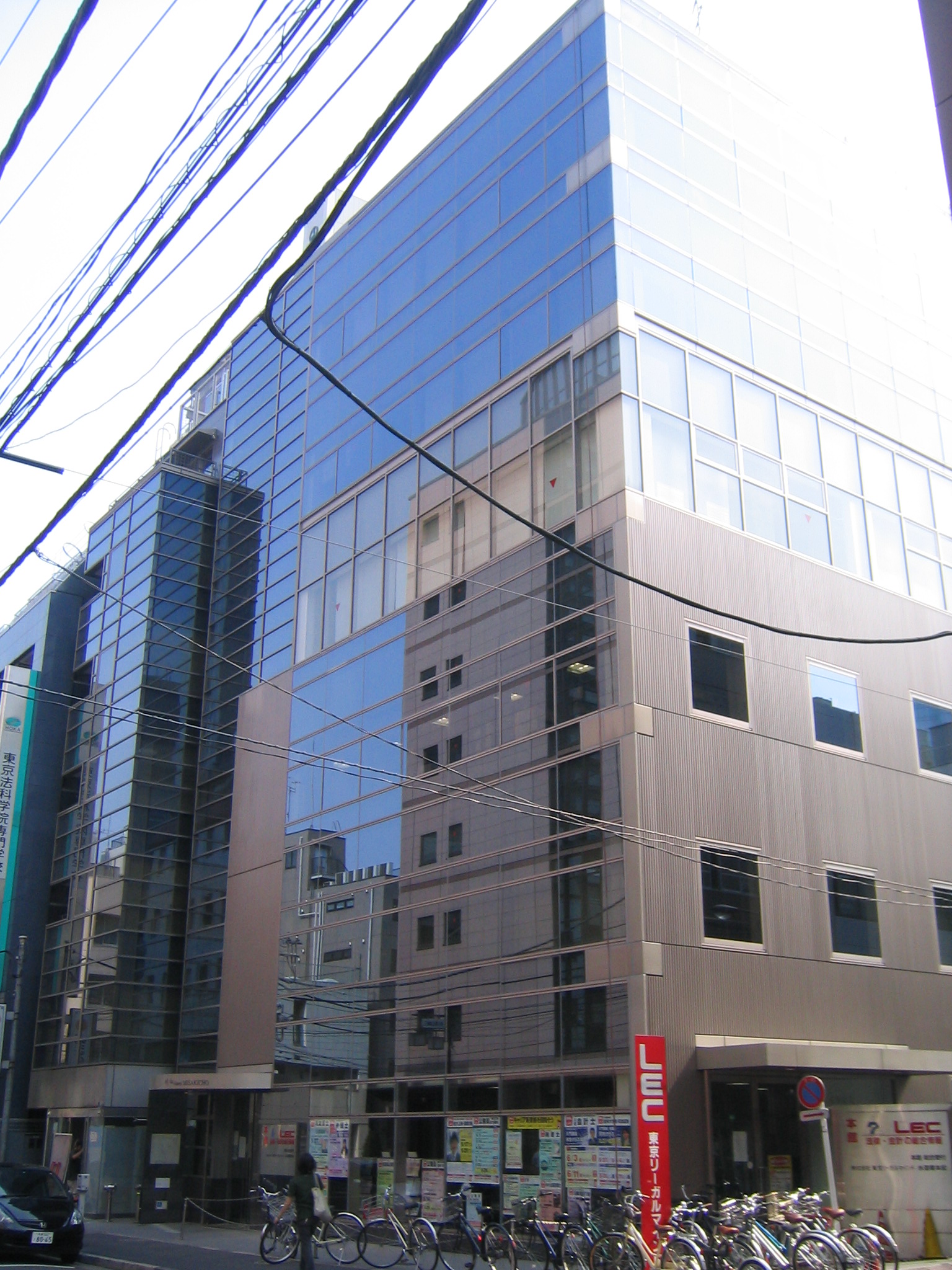|
Japan Women's College Of Physical Education
is a private university in Setagaya, Tokyo, Japan. The predecessor of the school, a juku, was founded 1922. In 1965 it was chartered as a university. Access The campus is about 7 minutes by bus and 20 minutes by foot from Chitose-Karasuyama Station on the Keiō Line. It takes about 25 minutes by bus from Kichijōji Station is an interchange passenger railway station serving Kichijōji in the city of Musashino, Tokyo, Japan, operated by East Japan Railway Company (JR East) and the private railway operator Keio Corporation. Lines Kichijōji Station is located on t ... on the JR Chūō Line. External links Official website Educational institutions established in 1922 Private universities and colleges in Japan Universities and colleges in Tokyo 1922 establishments in Japan Women's universities and colleges in Japan Sports universities and colleges Setagaya {{tokyo-university-stub ... [...More Info...] [...Related Items...] OR: [Wikipedia] [Google] [Baidu] |
Private University
Private universities and private colleges are institutions of higher education, not operated, owned, or institutionally funded by governments. They may (and often do) receive from governments tax breaks, public student loans, and grant (money), grants. Depending on their location, private universities may be subject to government regulation. Private universities may be contrasted with public university, public universities and national university, national universities. Many private universities are nonprofit organizations. Africa Egypt Egypt currently has 20 public universities (with about two million students) and 23 private universities (60,000 students). Egypt has many private universities, including The American University in Cairo, the German University in Cairo, the British University in Egypt, the Arab Academy for Science, Technology and Maritime Transport, Misr University for Science and Technology, Misr International University, Future University in Egypt and ... [...More Info...] [...Related Items...] OR: [Wikipedia] [Google] [Baidu] |
Setagaya, Tokyo
is a special ward in Tokyo, Japan. It is also the name of a neighborhood and administrative district within the ward. The ward calls itself Setagaya City in English. Its official bird is the azure-winged magpie, its flower is the fringed orchid, and its tree is the '' Zelkova serrata''. Setagaya has the largest population and second largest area (after Ōta) of Tokyo's special wards. As of January 1, 2020, the ward has an estimated population of 939,099, and a population density of 16,177 persons per km² with the total area of 58.06 km². Geography Setagaya is located at the southwestern corner of the Tokyo's special wards and the Tama River separates the boundary between Tokyo Metropolis and Kanagawa Prefecture. Residential population is among the highest in Tokyo as there are many residential neighbourhoods within Setagaya. Setagaya is served by various rail services providing frequent 2 to 3 minutes headway rush hour services to the busiest train terminals of Sh ... [...More Info...] [...Related Items...] OR: [Wikipedia] [Google] [Baidu] |
Japan
Japan ( ja, 日本, or , and formally , ''Nihonkoku'') is an island country in East Asia. It is situated in the northwest Pacific Ocean, and is bordered on the west by the Sea of Japan, while extending from the Sea of Okhotsk in the north toward the East China Sea, Philippine Sea, and Taiwan in the south. Japan is a part of the Ring of Fire, and spans an archipelago of 6852 islands covering ; the five main islands are Hokkaido, Honshu (the "mainland"), Shikoku, Kyushu, and Okinawa. Tokyo is the nation's capital and largest city, followed by Yokohama, Osaka, Nagoya, Sapporo, Fukuoka, Kobe, and Kyoto. Japan is the eleventh most populous country in the world, as well as one of the most densely populated and urbanized. About three-fourths of the country's terrain is mountainous, concentrating its population of 123.2 million on narrow coastal plains. Japan is divided into 47 administrative prefectures and eight traditional regions. The Greater Tokyo Ar ... [...More Info...] [...Related Items...] OR: [Wikipedia] [Google] [Baidu] |
Juku
''Gakushū juku'' ( ja, 学習塾; see cram school) are private, fee-paying schools that offer supplementary classes often in preparation for key school and university entrance exams. The term is primarily used to characterize such schools in Japan. Juku typically operate after regular school hours, on weekends, and during school vacations. History Juku attendance rose from the 1970s through the mid-1980s; participation rates increased at every grade level throughout the compulsory education years. This phenomenon was a source of great concern to the Ministry of Education, which issued directives to the regular schools that it hoped would reduce the need for after-school lessons, but these directives had little practical effect. Some juku have branches in the United States and other countries to help children living abroad catch up with students in Japan. While new media have been introduced into juku as instructional and delivery methods, traditional teaching is increas ... [...More Info...] [...Related Items...] OR: [Wikipedia] [Google] [Baidu] |
Keiō Line
The is a 37.9-km railway line in western Tokyo, Japan, owned by the private railway operator Keiō Corporation. It connects Shinjuku, Tokyo, with the suburban city of Hachiōji. The Keiō Line is part of a network with interchanges and through running to other lines of Keiō Corporation: the Keiō New Line, Keiō Sagamihara Line, the Keiō Keibajō Line, the Keiō Dōbutsuen Line, the Keiō Takao Line, and the gauge Keiō Inokashira Line. Services Six different types of limited-stop services are operated on the Keiō Line, along with local trains. Destinations are from Shinjuku unless otherwise indicated. English abbreviations are tentative for this article. ; : Also known as for short. Until 2001 it was called . ; (R) : Most services for Hashimoto and Keiō-Tama-Center on the Sagamihara Line, and Takaosanguchi on the Takao Line ; (SeE) : Most bound for on the Sagamihara Line. Until 2013, these were weekday-only services called . ; (E) :Most services run from the ... [...More Info...] [...Related Items...] OR: [Wikipedia] [Google] [Baidu] |
Kichijōji Station
is an interchange passenger railway station serving Kichijōji in the city of Musashino, Tokyo, Japan, operated by East Japan Railway Company (JR East) and the private railway operator Keio Corporation. Lines Kichijōji Station is located on the JR East Chūō Main Line, and is served by all-stations Chūō-Sōbu Line services from and some Chūō Line (Rapid) limited-stop services from . It also forms a terminus of the Keio Inokashira Line and is located 12.7 kilometers from the opposing terminus at in Tokyo. The station is 14 minutes from Shinjuku and 28 minutes from Tokyo by Chuo Line rapid service, and 23 minutes from Shibuya by Inokashira Line express service. JR East Station layout The JR East station consists of two elevated island platforms serving four tracks. It has a "Midori no Madoguchi" staffed ticket office and a "View Plaza" travel agent. Platforms Keio Station layout The Keio station consists of two elevated side platforms serving two terminati ... [...More Info...] [...Related Items...] OR: [Wikipedia] [Google] [Baidu] |
East Japan Railway Company
The is a major passenger railway company in Japan and is the largest of the seven Japan Railways Group companies. The company name is officially abbreviated as JR-EAST or JR East in English, and as in Japanese. The company's headquarters are in Yoyogi, Shibuya, Tokyo, and next to the Shinjuku Station. It is listed in the Tokyo Stock Exchange (it formerly had secondary listings in the Nagoya and Osaka stock exchanges), is a constituent of the TOPIX Large70 index, and is also one of the three only Japan Railways Group constituents of the Nikkei 225 index, the other being JR Central and JR West. History JR East was incorporated on 1 April 1987 after being spun off from the government-run Japanese National Railways (JNR). The spin-off was nominally "privatization", as the company was actually a wholly owned subsidiary of the government-owned JNR Settlement Corporation for several years, and was not completely sold to the public until 2002. Following the breakup, ... [...More Info...] [...Related Items...] OR: [Wikipedia] [Google] [Baidu] |
Chūō Main Line
The , commonly called the Chūō Line, is one of the major trunk railway lines in Japan. It connects Tokyo and Nagoya, although it is the slowest direct railway connection between the two cities; the coastal Tōkaidō Main Line is slightly faster, and the Tōkaidō Shinkansen is currently the fastest rail link between the cities. The eastern portion, the , is operated by the East Japan Railway Company (JR East), while the western portion, the , is operated by the Central Japan Railway Company (JR Central). The dividing point between the two companies is , where express trains from both operators continue to the Shinonoi Line towards the cities of Matsumoto and Nagano. Compared to the huge urban areas at either end of the Chūō Line, its central portion is very lightly traveled; the Shiojiri-Nakatsugawa corridor is only served by one limited express and one local service per hour. The Chūō Main Line passes through the mountainous center of Honshu. Its highest point (near ) ... [...More Info...] [...Related Items...] OR: [Wikipedia] [Google] [Baidu] |
Educational Institutions Established In 1922
Education is a purposeful activity directed at achieving certain aims, such as transmitting knowledge or fostering skills and character traits. These aims may include the development of understanding, rationality, kindness, and honesty. Various researchers emphasize the role of critical thinking in order to distinguish education from indoctrination. Some theorists require that education results in an improvement of the student while others prefer a value-neutral definition of the term. In a slightly different sense, education may also refer, not to the process, but to the product of this process: the mental states and dispositions possessed by educated people. Education originated as the transmission of cultural heritage from one generation to the next. Today, educational goals increasingly encompass new ideas such as the liberation of learners, skills needed for modern society, empathy, and complex vocational skills. Types of education are commonly divided into forma ... [...More Info...] [...Related Items...] OR: [Wikipedia] [Google] [Baidu] |
Private Universities And Colleges In Japan
Private or privates may refer to: Music * "In Private", by Dusty Springfield from the 1990 album ''Reputation'' * Private (band), a Denmark-based band * "Private" (Ryōko Hirosue song), from the 1999 album ''Private'', written and also recorded by Ringo Sheena * "Private" (Vera Blue song), from the 2017 album ''Perennial'' Literature * ''Private'' (novel), 2010 novel by James Patterson * ''Private'' (novel series), young-adult book series launched in 2006 Film and television * ''Private'' (film), 2004 Italian film * ''Private'' (web series), 2009 web series based on the novel series * ''Privates'' (TV series), 2013 BBC One TV series * Private, a penguin character in ''Madagascar'' Other uses * Private (rank), a military rank * ''Privates'' (video game), 2010 video game * Private (rocket), American multistage rocket * Private Media Group, Swedish adult entertainment production and distribution company * ''Private (magazine)'', flagship magazine of the Private Media Group ... [...More Info...] [...Related Items...] OR: [Wikipedia] [Google] [Baidu] |




